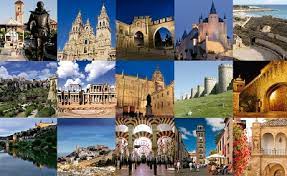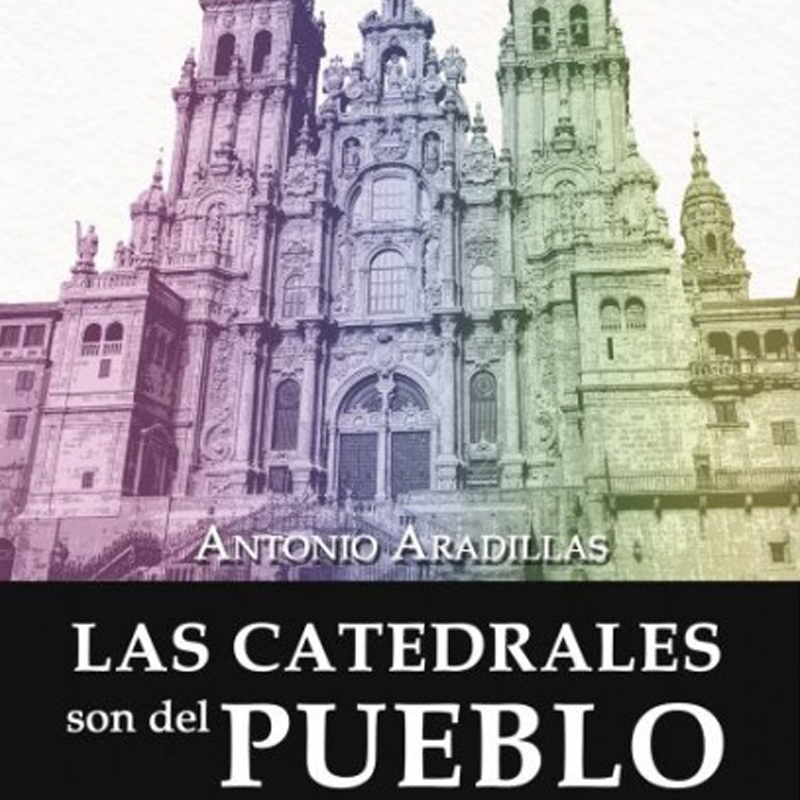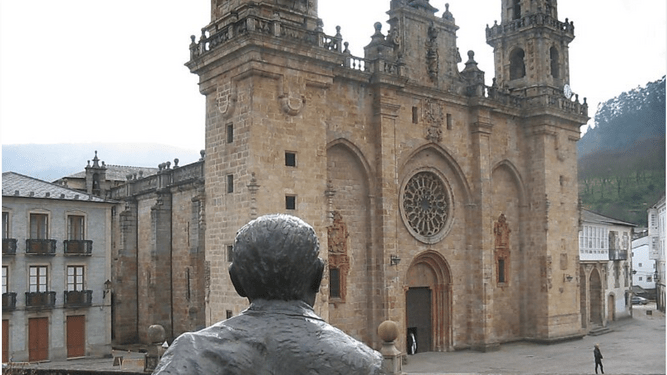Yes, the cathedrals belong to the people, this It is the reiterated proclamation that heads each one of the pages of the text, one more, of those written by the veteran active journalist and well-known priest and journalist Antonio Aradillas.
The present text of extensive and studied elaboration derives from the leisurely selection drawn from the meritorious historical-artistic heritage of our secular cathedral legacy. Exquisite thematic conjunction, raised to its highest level embodied in the popular as an associative and exclusive identity for each one of the residents of this country, which, since ancient times, we have called Spain. Beyond the ecclesial environment, as administrator of such a rich and secular precious community, presided over by the Estal Chair, a chosen place, in which we can visit the Lord of Lords as an unequivocal reference of any human being, and especially of all Christians: The Chair, beyond the academic environment, constitutes the priority nucleus of an urbanism that shapes humane hopes, erected and deposited in the Trinitarian concept on which they are based..
Interesting and lively text comparable to the hundred that preceded him, thanks to the aforementioned author as the protagonist of an enriched biography tuned in by the perseverance and manifest interest deposited in each page of his extensive biography, backed by his excellent descriptive and incisive memory continuously reflected in sublimated writing. In general, his texts are preceded by a playful and entertaining cognitive perception made up of a living and lived liturgy, in biographical comparison to the unprecedented privilege of having seen the completion and inauguration of some of these cathedral buildings. We must not forget that during the last century, we were able to attend the inauguration of the Madrilenian and owner of La Almudena, without forgetting other recently erected ones such as San Sebastian or Alava, among others.
Like a sharpened and fine-tuned arrow, Antonio Aradillas uses a versed narrative style vindicating the popular character attached to the various construction processes of the cathedrals erected to invite the faithful to integrate with a space, considered sacred. In a select and unique arrangement they are outlined in a summarized text divided into separate sections, or parts. The first dedicated to signify the list of some of the cathedrals reviewed and scattered throughout the extensive peninsular and insular geography, among which are included, the references of Granada, Ávila, the cathedral trio of the Rioja Diocese, Tarragona, Pamplona, Coria, the Santiago de Compostela, Segovia, Astorga, El Burgo de Osma , Córdoba, Madrid, Cuenca, Tarazona, Mondoñedo, Ciudad Rodrigo, Zamora, Tortosa, Zaragoza, the Magistral of Alcalá de Henares, Huesca, Guadix, Sigüenza, Burgos, Barbastro, Jaén, León, Teruel, Plasencia, Barcelona, Murcia, Salamanca , Ourense, Bilbao, Getafe, Valencia, Girona, Palma de Mallorca and Toledo
The second part collects a series of complementary personal reflections of the previous chapter, in a Latinized way of Addenda, assumed synonymy of addition, incorporation or integration. In a textual summary, it adheres to the desirable contribution of a pastoral focused on rooting, evangelization and “synodality” of the Church, Pope Francis’ priority concern apart from the domestic and cumbersome Hispanic messes, of registrations. The final result constitutes and is summarized in an interesting text, in which even those who are not regular visitors to such lofty and sought-after venues participate, repositories of a good part of a prayerful faith, accumulated inside such suggestive cathedral spaces, elevated from their naves, altars and chapels.

Without avoiding the implicit spatial limitation, my good and admired friend Antonio Aradillas, channels and projects the best of himself, embodied in each of the stones that were incorporated to raise and claim even the celestialthe considered and embellished composition initiated in this blessed land that generates such extraordinary buildings in unanimous response to the universalized and successful Jesuit logo of ad maiorem Dei gloriam.
Another of the punctual, reiterated and controversial terms leads to the updated episcopal function, sometimes somewhat outdated and controversial in the exercise of the continuous service of shepherding, oblivious, on some occasions to the presidency of the Chair, from which the word Cathedral seems to derive.
The role of shepherding together with the permanent service to the people to whom it is due, after being chosen and recognized to hold a temporary period for acceptance, affection and mutual humane understanding in assumed brotherhood as all members, participants in a single Body, a one faith and one Lord. Other aspects are projected to the tourist environment with the good, or bad, historical-artistic acculturation, with the resolution of being able to contemplate unusual venues such as some episcopal palatial stays. In an accelerated synthesis, spirituality, art and culture collude in order to textualized clarification in unison with pietistic devotion, freedom and worship, belonging, legacy and inheritance of a heritage inherited by the dignified People of God.

We give you the Praedicate Evangelium + analysis
‘The cathedrals belong to the people’: Antonio Aradillas in its purest form

